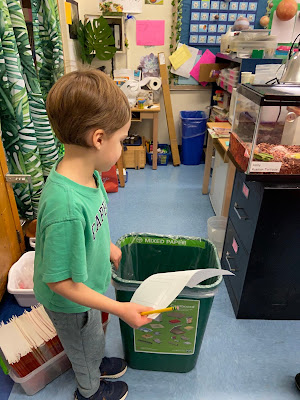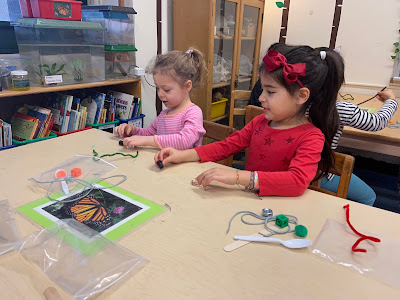We then made two balls of clay and put the larger ball into a paper cup and the smaller ball into a vial filled with water. We made predications about what the clay would look like the next science class.
It was not a surprise to most of the 2nd graders, that the following week, the clay in the paper cup was hard. Hard as a rock! They were surprised that even though the clay was hard, it still could break! We put a little water into the cup to see what would happen....the clay softened up again.




















































